Party Day Badges & Pins
In 1933, the introduction of party badges coincided with the NSDAP’s declaration of May 1st as the official state holiday known as the “Day of National Work.” This designation aimed to commemorate laborers and the working classes. Seeking to garner support from the labour force, the Nazis designated May Day, traditionally celebrated by organized labour, as a paid holiday. On May 1, 1933, elaborate celebrations were held to honour German workers, emphasising the importance of acknowledging and appreciating their contributions. Adolf Hitler frequently extolled the virtues of labour, proclaiming in the Völkischer Beobachter that “I only acknowledge one nobility—that of labour.” The regime believed that securing the support of workers was crucial to preventing a recurrence of the 1918 disaster.
Hitler emphasised the need for Germany to honour its workers, portraying them as patriots who played a pivotal role in building the nation’s industrial strength and serving honourably in the war. The regime propagated the idea that the only means to avoid a repeat of past difficulties was to establish a strong bond between workers and the German government. Through extensive propaganda efforts, the regime encouraged all Germans to participate in the May Day celebrations, envisioning that this collective involvement would help dismantle class hostilities between workers and burghers.
State radio broadcasted songs praising labour and workers throughout May Day, accompanied by an air show and fireworks in Berlin. Hitler’s speeches underscored the perceived oppression of workers under economic liberalism and highlighted their crucial role in the nation’s development. Surprisingly, even publications like the Berliner Morgenpost, which had previously been aligned with the political left, praised the regime’s May Day celebrations, reflecting a moment of unity amid diverse political affiliations.
Showing all 45 results
-

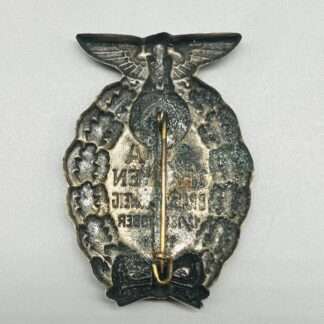
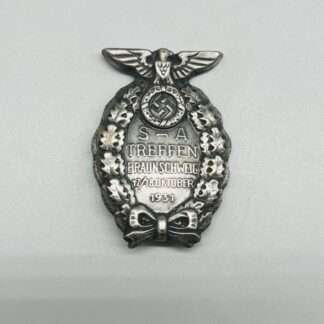
Brunswick Rally Badge
A genuine SA-Treffen Braunschweig badge, die-stamped construction hollow back in tombak with a nice patina. The reverse of the badge is unmarked with a vertical pin assembly. The badge has no damage or repairs in good condition.
Product ID: 8190 £165.00View Details Add to Basket -

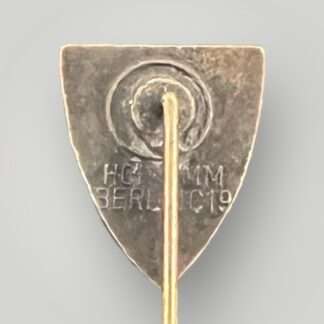

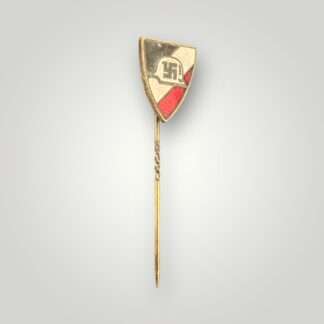
Deutsche Wehr Home Defense League Membership Stick Pin
A scarce Deutsche Wehr Home Defense league membership stick pin, constructed in black, gold, white, and red enamel. The reverse of the stick pin has the makers mark HCH Timm Berlin C19. The badge has no damage or repairs in very good condition.
Product ID: 10610 £125.00View Details Add to Basket -
Top

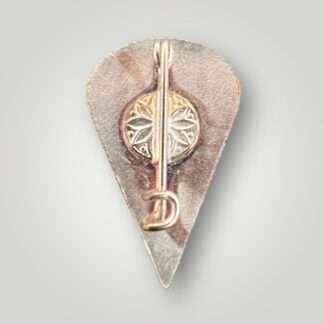

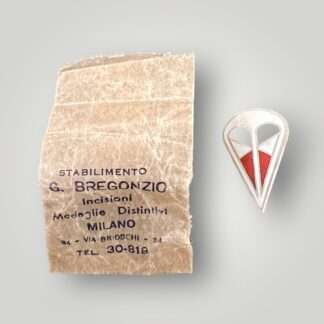
Fallschirmjäger Division M43 Cap Badge And Packet
A rare Fallschirmjäger Division M43 cap badge and packet, constructed in enamel with a stylised parachute in the german colours black, white, and red which was worn of the left-hand side of the Luftwaffe M43 feldmutze during the Italian campaign. The reverse has a classic safety pin assembly, measuring 26mm x 16mm, complete with the issued packaging made by Italian manufacturer “stabilimento G. Bregonzio, Milano”, in mint condition.
Product ID: 10628 £160.00View Details Add to Basket -

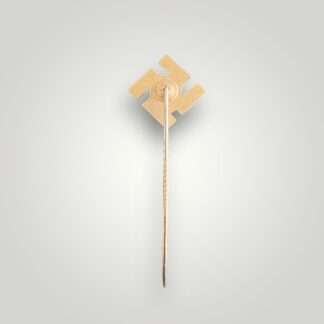

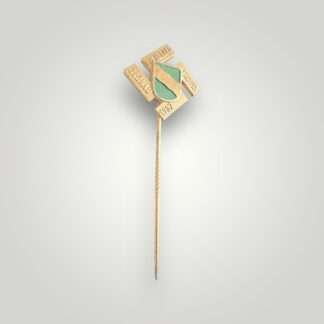
Gronau Grenzland Treffen 1937 Stick Pin
An original Gronau Grenzland Treffen 1937 stick pin. This lapel pin commemorates the 1937 meeting that took place in the border district of Gronau, located in North Rhine-Westphalia, Germany. The gathering brought together the districts of Gronau, Grenzland, and Treffen. Featuring the district shield on the front and the national insignia on the back, this non-maker marked pin serves as a memento of that historic event. The badge has no damage or repairs in very good condition.
Product ID: 10601 £50.00View Details Add to Basket -




HJ Hitler Youth Jugendtag 1933 Stuttgart
A scarce HJ Hitler Youth Jugendtag 1933 Stuttgart, die-stamped construction in bronze. The obverse of the badge is a shield depicting an HJ Flag in front of town scenery with the following text embossed above "Wir sind die Bauherrn d. 3. Reiches" (We Are Builder 3rd Empire) and the following below "Hitler-Jugend Unterbann VII - Jugendtag 8.-9. Juli 1933 - Stuttgart" (Hitler Youth Subban VII - Youth Day 8 - 9h July 1933 - Stuttgart). The reverse of the tinnie has a vertical pinback; unmarked; measuring 40 mm x 18 mm; in very good condition.
Product ID: 8680 £135.00View Details Add to Basket -

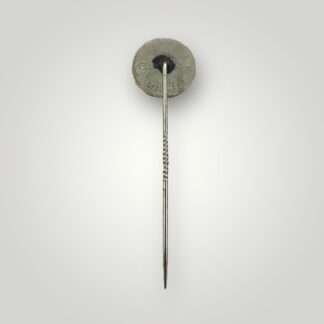

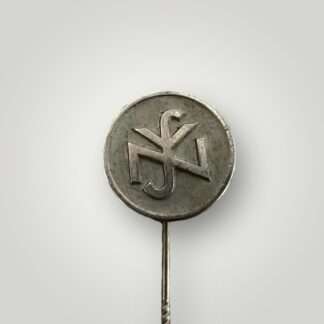
National Socialist People’s Welfare Organisation (NSV) Pin
A rare National Socialist People's Welfare Organisation (NSV) lapel pin, being a small blackened metal disc with an outer raised white metal border, in the centre of which embossed a white metal symbol of a horizontally elongated N through the centre of which a vertically elongated S, where the S crosses the N a letter V. The reverse of the pin is marked GES. GESCH, with the RZM logo and the number 79 for Walter Amlauf, Leipzig.
Product ID: 10870 £120.00View Details Add to Basket -
Top

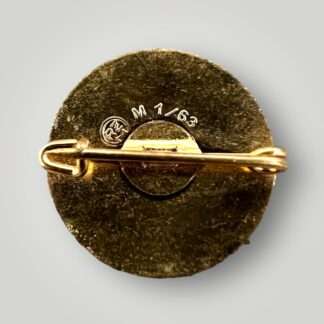

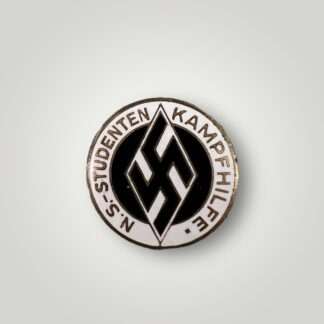
NS Studenten Kampfhilfe Lapel Badge
An original National Socialist Studenten Kampfhilfe lapel badge, conctructed in white, gold, and black. The reverse is marked with the RZM logo and M1/63 for Steinhauer & Luck, Ludenschei, with safety pin assembley, measuring 22.5mm in diametre. The badge has no damage or repair in mint condition.
Product ID: 10930 £160.00View Details Add to Basket -
Sold

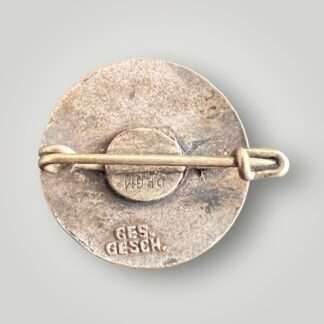

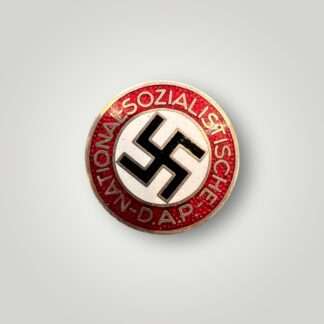
NSDAP Early Enamel Party Badge Marked DRGM
An orginal NSDAP early enamel party badge marked DRGM, constructed in red, white, black, and gold enamel. The reverse of the pin is marked with the patent mark 'DRGM' and the badge is stamped 'Gesh & Gesch’ indicating, Gesetzlich Geschützt, (Protected by Law) complete with horizontl safty pin catch. The NSDAP Party Badge has a few scratch on the enamel otherwise in good condition.
Product ID: 10572 £120.00View Details -
Sold

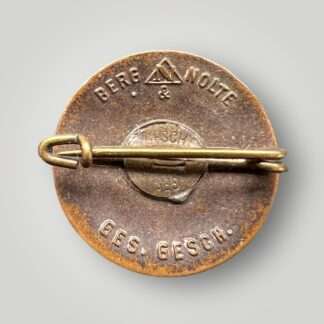

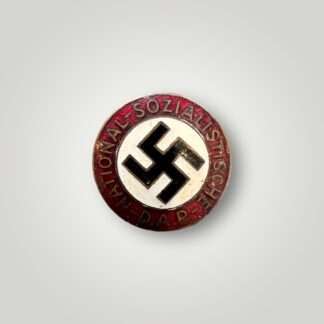
NSDAP Party Badge By Berge & Nolte
A rare example of a NSDAP Party Badge by Berge & Nolte constructed in red, white, black, and gold enamel. The reverse of the pin is marked ‘Gesh & Gesch’ indicating, Gesetzlich Geschützt, (Protected by Law) complete with the Berge & Nolte logo. The party badge has no damage or repairs in good condition.
Product ID: 10571 £125.00View Details -
Top



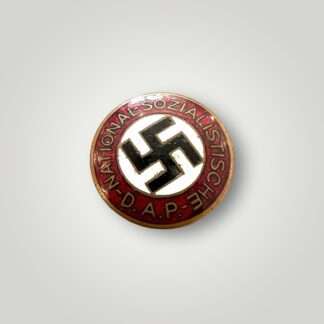
NSDAP Party Badge By Schwertner & Cie, Graz, Eggenberg
An early NSDAP Party Badge By Schwertner & Cie, Graz, Eggenberg, constructed in red, white, black, and gold enamel. The reverse of the pin is stamped "Schwertner & Cie, Graz, Eggenberg" above the pin and “Ges. Gesch.” indicating a legally protected design. The NSDAP Party Badge has no damage or repairs in good condition a rare Austrian variant.
Product ID: 12871 £300.00View Details Add to Basket -
Sold



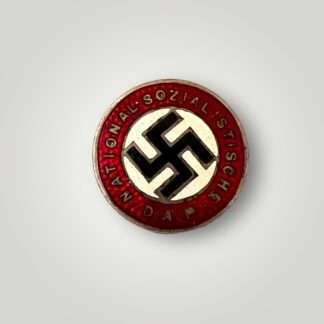
NSDAP Party Badge Unmarked
An orginal NSDAP party badge unmarked, constructed in red, white, black, and gold enamel. The reverse of the badge has no RZM code, but is marked 'Gesh & Gesch’ indicating, Gesetzlich Geschützt, (Protected by Law) complete with horizontl safty pin catch. The NSDAP party badge has no repairs, and the enamel is free from cracks or chips in good condition.
Product ID: 10415 £145.00View Details -
Top

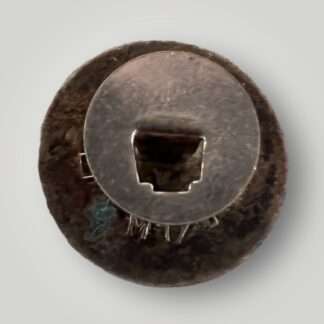

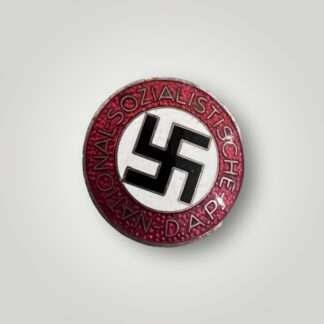
NSDAP Party Button Hole Enamel Badge M1/8
An NSDAP Party Button Hole Enamel Badge M1/8, constructed in red, white, black, and gold enamel. The reverse of the badge has the RZM makers mark number 'M1/8' for Ferdinand Wagner of Pforzheim manufacturer. The button hole measures 22.5mm in diametre, with no damage or repair in mint condition.
Product ID: 11117 £145.00View Details Add to Basket -
Sold

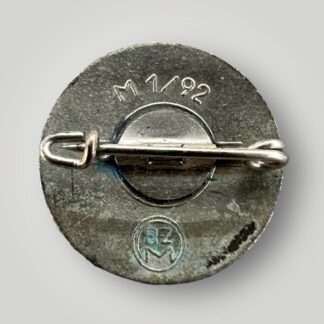

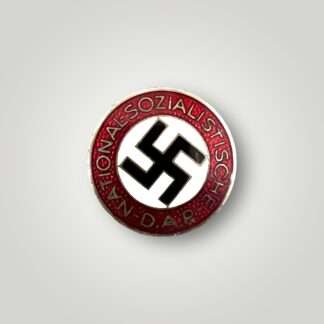
NSDAP Party Pin Badge M1/92
An orginal NSDAP Party Pin Badge M1/92, constructed in red, white, black, and gold enamel. The reverse of the pin has the RZM makers mark number 'M1/92' for manufacture Karl Wild of Hamburg, complete with horizontal safety pin-style catch measuring 22.5mm in diametre. The NSDAP Party Badge has no damage or repairs in mint condition.
Product ID: 10936 £165.00View Details -
Sold

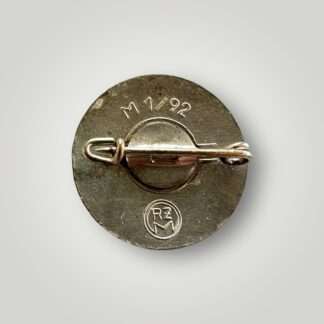

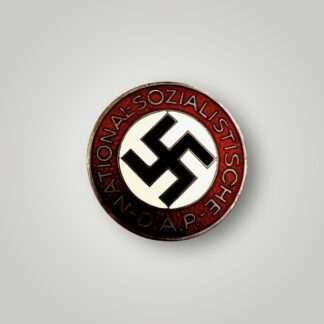
NSDAP Party Pin Badge M1/92 – Mint
An orginal NSDAP Party Pin Badge M1/92, constructed in red, white, black, and gold enamel. The reverse of the pin has the RZM makers mark number 'M1/92' for manufacture Karl Wild of Hamburg, complete with horizontal safety pin-style catch measuring 22.5mm in diametre. The NSDAP Party Badge has no damage or repairs in mint condition.
Product ID: 11682 £185.00View Details -

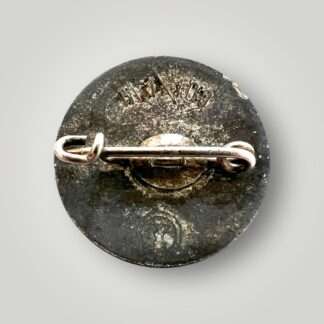

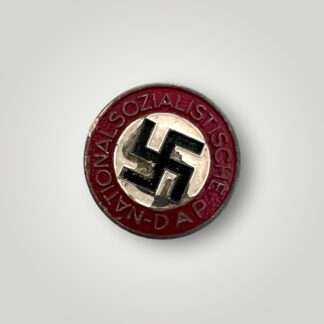
NSDAP Party Pin Late War Painted Badge M1/100
A NSDAP Party pin late war painted badge M1/100. The obverse of the badge depicts a roundal with the inscription 'D.A.P. National-Sozialistische' with a painted black swastika in the centre with a white background. The reverse of the pin has the RZM logo and number 'M1/102' for Werner Redo, Saarlautern, complete with horizontal safety pin-style catch. The NSDAP Party Badge is in worn condition and the white paint is chipped.
Product ID: 12823 £85.00View Details Add to Basket -

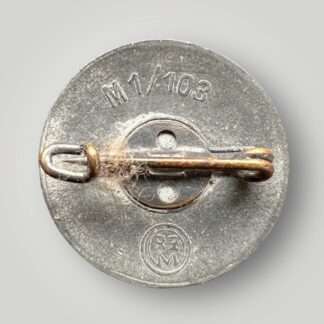

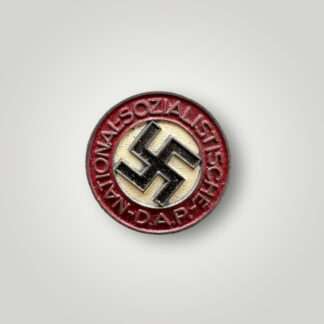
NSDAP Party Pin Late War Painted Badge M1/102
A NSDAP Party pin late war painted badge M1/102. The obverse of the badge depicts a roundal with the inscription 'D.A.P. National-Sozialistische' with a painted black swastika in the centre with a white background. The reverse of the pin has the RZM logo and number 'M1/102' for Frank & Reif Stuttgart, complete with horizontal safety pin-style catch. The NSDAP Party Badge has no damage or repairs in good condition.
Product ID: 10562 £100.00View Details Add to Basket -

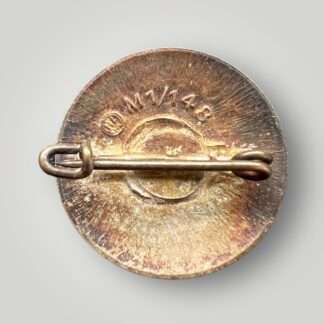

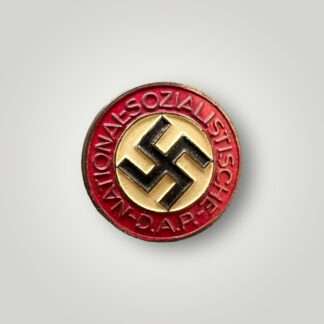
NSDAP Party Pin Late War Painted Badge M1/148
A NSDAP Party pin late war painted badge M1/148. The obverse of the badge depicts a roundal with the inscription 'D.A.P. National-Sozialistische' with a painted black swastika in the centre with a white background. The reverse of the pin has the RZM logo and number 'M1/148' for Alexander Wollram, Dessau, complete with horizontal safety pin-style catch. The NSDAP Party Badge has no damage or repairs in good condition.
Product ID: 10554 £120.00View Details Add to Basket -
Top

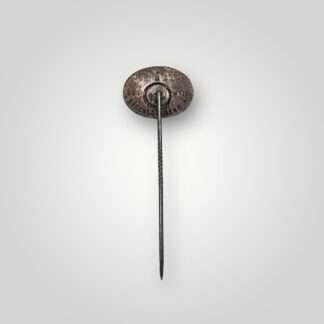

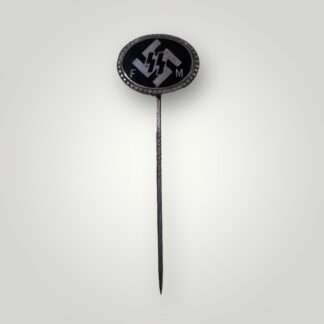
SS F-M Sponsors Pin By Deschler & Sohn
This exception and scarce SS F-M Sponsors Pin by Deschler & Sohn was awarded to the SS financial patrons. The pin is made of nickel silver, with a smooth black enamel on the front. It shows the SS runes over a swastika, with the initials “F M” for “Förderndes Mitglied,” inside a textured border. The enamel is flawless, with no cracks or chips and a nice luster. The silvery metal makes a striking contrast with the black enamelwork. The back of this SS FM Pin has the maker's mark of Deschler in Munich, and also has the inscription “Ges. Gesch.” indicating a legally protected design. It also has the SS supporter number “71688' stamped on it. The pin has a long, straight stick pin, which is attached to the back of the badge with a soldered plate. The pin has a proper ridged shaft, and there is no damage and no repairs. These pins are becoming very rare. This one is superb, and is in near mint condition.
Product ID: 12763 £350.00View Details Add to Basket -

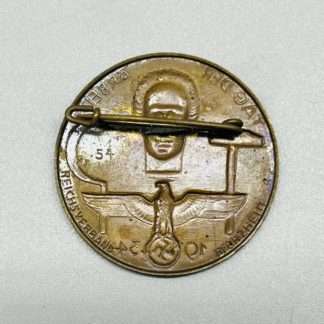

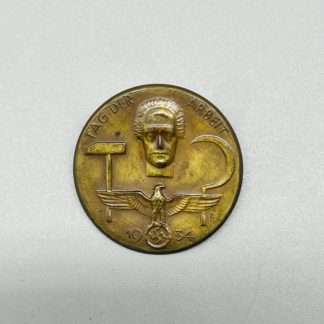
Third Reich National Day Of Labour Badge 1934
A Third Reich National Day Of Labour Badge 1934, constructed disc in brass. The obverse of the day badge depicts a man's bust with the inscription above "Tag Der Arbeit" (Day of Labour " with a tack hammer below to the left and a sickle to the right, partially behind the National eagle's outstretched wings, clutching a canted swastika in its talons flanked with the date "1934", below the right of the right-wing is the initials "RK". The reverse has a horizontal pinback with the maker marked “Reichsverband, Pforzheim, 47” on the reverse; measuring 35 mm in diameter; in overall good condition.
Product ID: 7706 £25.00View Details Add to Basket
Showing all 45 results

